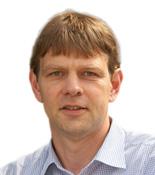
Thomas R. Schneider
Head of EMBL Hamburg
ORCID: 0000-0001-6955-7374
EditTools for structure determination and analysis

Head of EMBL Hamburg
ORCID: 0000-0001-6955-7374
EditIn structural biology a crystal offers two unique properties: firstly, by its very nature, a crystal creates a conformationally homogeneous ensemble. Secondly, through its periodicity, a crystal amplifies diffracted signals such that high-resolution features can be resolved. Our aim is to extract the best possible diffraction data from crystals and to support the evaluation of these data in terms of their molecular structure.
Since 2012 we have operated two beamlines for macromolecular crystallography: P13 and P14 on the PETRA III synchrotron at the DESY site in Hamburg.
Inspired by the developments for crystallography at free-electron lasers, we have established the Serial Synchrotron Crystallography Methodology for data collection on micro-crystals on synchrotron beamlines in collaboration with Henry Chapman (CFEL Hamburg) and Lars Redecke (University of Lübeck). The ‘serial helical scan approach’ for data collection is now available as a routine protocol on the P14 beamline.
We also provide computational tools for phasing (‘hkl2map’) and structure analysis (‘rapido’) via the web.
We are pushing our beamlines towards adjustable X-ray beams and flexible data acquisition schemes in order to provide optimum conditions for crystals of different sizes and different diffraction quality. Serial crystallography approaches are most suitable for crystals with sizes in the sub 10-micron range. For larger crystals, systematic multiple crystal strategies need to be employed. Based on the versatile optics in place on the beamlines – i.e. adaptive X-ray optics on P13, adaptive optics plus compound refractive lenses (CRL) on P14 – we are developing protocols optimised for a wide range of different sample types. In collaboration with the Cipriani and Fiedler teams at EMBL Grenoble, we are constantly improving the instruments on the beamline to obtain better (anomalous) data from poor samples, mostly to enable experimental phasing of large molecular complexes. Once established, we implement experimental protocols in the MxCuBE-beamline user interface, so that these can be employed easily by the beamline users – see https://github.com/mxcube.
In 2016, a CrystalDirect crystal harvesting system, developed by colleagues at EMBL Grenoble, will be deployed at EMBL Hamburg. The system will allow users to gently (and remotely) treat and harvest fragile crystals for synchrotron data collection, thereby enabling crystal structure determination for a wider range of samples. We will also use CrystalDirect to develop more rational and controlled approaches to derive macromolecular crystals for experimental phasing approaches.